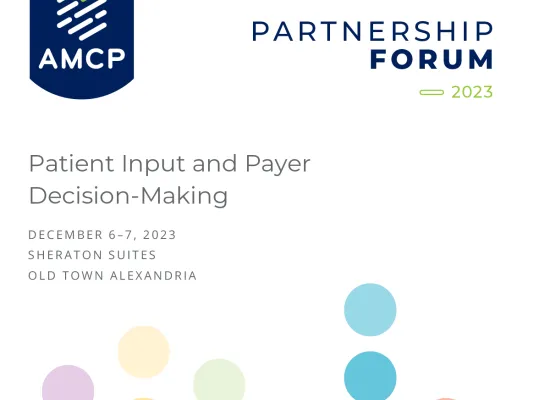
AMCP Market Insights Roundtable on Amyotrophic Lateral Sclerosis
Findings from an AMCP Market Insights Program
Amyotrophic lateral sclerosis (ALS) is a rare, rapidly progressive, and fatal neurodegenerative disease characterized by loss of motor neurons in the brain and spinal cord.1 The etiology of ALS is unknown, however it is thought to be due to a combination of genetic predisposition, environmental exposures, and aging-related dysfunction. The clinical presentation of ALS varies depending on which motor neurons are affected. ALS commonly presents with localized weakness that progresses to muscle paralysis, respiratory failure, and death. Additionally, approximately 15% of patients develop frontotemporal dementia.3 In the United States, it is estimated that 25,000 people are living with ALS.2 The greatest risk factor for developing ALS is age, with the highest prevalence of symptom onset occurring between 55 and 75 years of age.4 The average life expectancy is three to five years after symptom onset and as the disease progresses there is significant caregiver burden.1 Current treatments for ALS are largely focused on supportive care. Typically, treatment includes a combination of therapies along with durable medical equipment (DME) to help preserve quality of life as long as possible.
In April 2023, AMCP convened an expert panel of clinical and managed care stakeholders to increase understanding on how payers can inform strategies to improve the care and treatment of those impacted by ALS. Panelists included representatives from national and regional health plans, integrated delivery systems, employers, clinical experts, and a patient and patient advocacy organization. Participants discussed the heterogeneity of the disease, changing treatment landscape, coordination of insurance benefits, and opportunities to improve outcomes for patients with ALS.
- Findings from Market Insights: Amyotrophic Lateral Sclerosis
- Webinar: Exploring Opportunities to Improve the Quality of Life for Those with Amyotrophic Lateral Sclerosis (ALS) – Findings from the Market Insights Program
1. Brown RH, Al-Chalabi A. Amyotrophic Lateral Sclerosis.N Engl J Med. 2017;377(2):162-172.
2. Mehta P, Raymond J, Punjani R, et al. Prevalence of amyotrophic lateral sclerosis in the United States using established and novel methodologies, 2017. Amyotrophic Lateral Sclerosis and Frontotemporal Degeneration. 2022:1-9.
3. Murphy J, Factor-Litvak P, Goetz R, et al. Cognitive-behavioral screening reveals prevalent impairment in a large multicenter ALS cohort. Neurology. 2016;86(9):813- 20.
4. National Institute of Neurological Disorders and Stroke. Amyotrophic Lateral Sclerosis (ALS). https://www.ninds.nih.gov/ health-information/disorders/amyotrophic-lateral-sclerosis-als. Accessed April 27, 2023.
Featured News & Resources
See Full CalendarAI Pre-Conference Program
AMCP Southwest Day of Education
Upcoming Events
AMCP offers a wide variety of educational opportunities, from events and webinars to online training.







